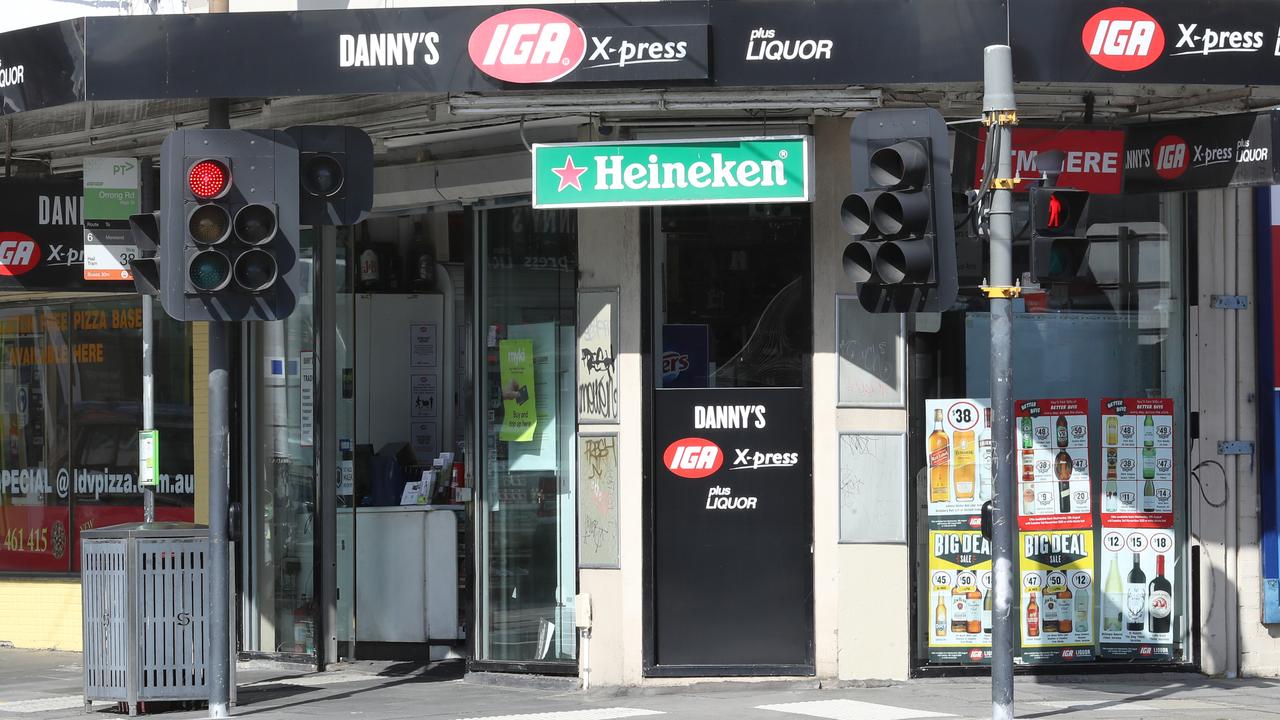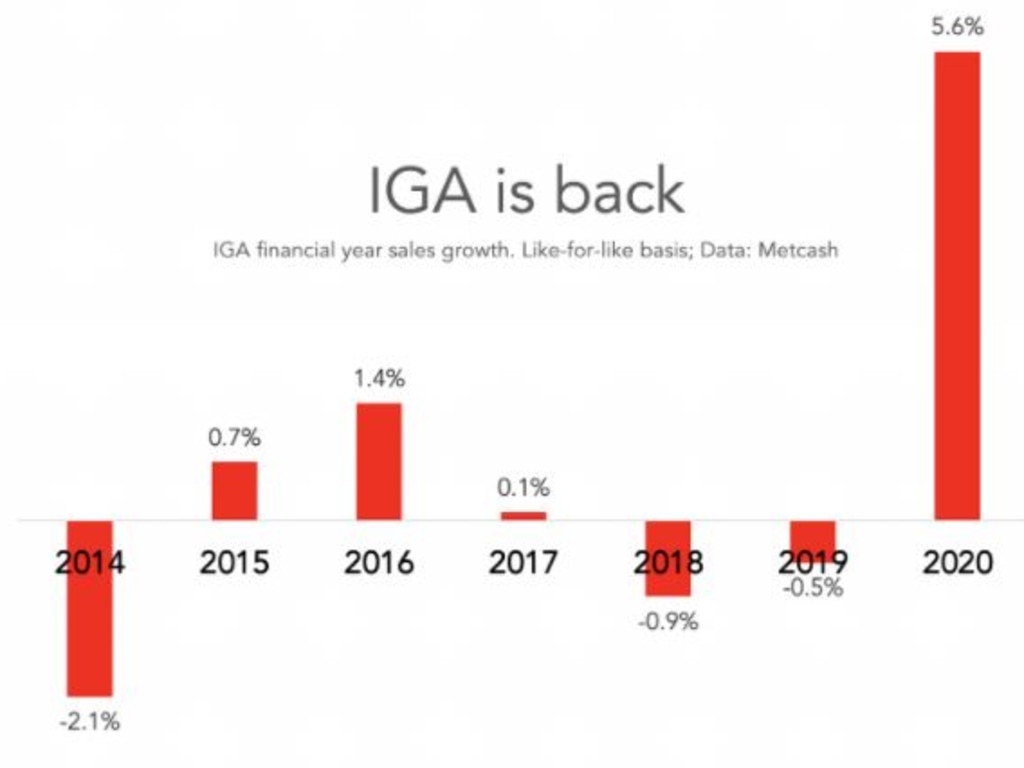IGA supermarkets make surprise comeback during pandemic
They were getting crushed by the supermarket giants but now this little shop has had a whopping 2020 and its good news for all shoppers.
This is a story about a comeback. A comeback by the little supermarkets that looked to be fading away: IGA supermarkets. The local independent grocers were getting crushed by the might of the Australian corporate supermarket duopoly and the fiercely discounted prices of the German supermarket chain. They had been losing sales and shrinking for years.
But now, IGA supermarkets are back, baby.
Thanks to the pandemic, people are shopping near their house more than ever. And that has given IGA the chance to show it is still relevant.
RELATED: ‘Clever trick’ to JB Hi-Fi’s success
RELATED: Blow Kmart might not recover from

IGA supermarkets are independent, but they are part of a network run by a company called Metcash. Metcash is basically the wholesaler that keeps IGAs full of groceries. They also supply Foodland in South Australia and a few others. You can find out how IGA supermarkets are going by looking at the financial reports of Metcash.
Metcash chairman Robert Murray says there was “extraordinary demand” for groceries in the pandemic. The numbers prove it. Sales for the food section of Metcash rose 3.5 per cent in the financial year just finished.
They rose even more strongly if you just look at IGA: up by 5.6 per cent. As the next graph shows, the sales growth comes after a long period where IGA didn’t do too well, shrinking in three of the past six years and even when it did grow, growing less than inflation.
RELATED: Graph shows what is killing Aussie malls

It is actually the first time since 2012 that the underlying sales of Metcash’s food business have grown. Then, in the first three months of the new financial year, some even bigger growth. Metcash food sales shot up an amazing 13.8 per cent.
“We have seen a shift in consumer behaviour as a result of COVID-19,” said CEO Jeff Adams. “Stores are reporting they are seeing more new customers – customers who have not visited for a while and are giving IGA a retry during this time.”
The rise from the dead of IGAs is as surprising as it is welcome. I really hope they continue to do well after the pandemic finishes (assuming it ever does!). The reason is this: we need all the competition we can get in the supermarket space.
SUPERMARKET WARS
IGA is only a little hitter in the supermarket game. As the next graph shows, it commands a modest fraction of the market.

Aldi has been winning more and more market share. It is catching up with Coles and at this rate it could be the second-biggest supermarket chain in Australia by 2035. But Aldi has changed its vibe. When it came to Australia, it presented itself as extremely cheap and bare-bones. Since then it has refreshed its stores. They now look and feel a bit more like any other supermarket.
Aldi says it remains committed to “lowest prices” and to “never be beaten on the price of your local grocery shop.” But I wonder whether price is really such a focus any more. Because I also notice that grocery price competition in Australia has got a lot softer recently.
There was a time a few years ago when Coles was advertising “Down Down” and Woolworths was advertising “Cheap Cheap”.
Back then milk cost a dollar, bread cost a dollar too and when the Woolworths CEO revealed his financial results to market he was forced to admit that total prices had fallen. In 2017 Woolworths prices fell 2.1 per cent.
These days prices are going the other way, as the next graph shows. Coles reported prices had risen 2.4 per cent in the last year. Woolworths said its prices had risen 1.4 per cent. And you can see the same thing in the official government inflation statistics.

IGAs are not famous for being cheap, but they can still contribute to competition. If a local shop is very convenient, then the Coles, the Woolies or the Aldi needs to offer even bigger discounts to get you to come.
If we want a vibrant and competitive group of supermarkets in this country we should be pleased that IGA is showing signs of life.
Jason Murphy is an economist | @jasemurphy. He is the author of the book Incentivology.




